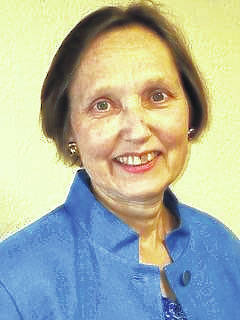
First, I want to give due regard to the Delaware General Health District folks for resisting CDC pressure and continuing to honestly report “confirmed” and “presumed” COVID-19 statistics in their appropriate categories. In the clinical situation that Ohio Sen. Steve Huffman cites, of the nearly 3,000 “presumed” COVID-19 cases that were subsequently tested, only 6.4% tested positive.
As he has illustrated so aptly, the CDC’s March 24 update on death certificates, which directs doctors to “presume” COVID-19 based only on common symptoms, would invalidate any combined statistics. NYC bumped up its COVID-19 death stats by 57% in one fell swoop by adding backdated “presumed” COVIDs to their numbers. This was done just as its COVID-19 case growth rate started to decline. Interesting timing.
The CDC “guidance” on death certificates also instructs that in any death where COVID-19 was involved, regardless of whether or not it was the primary cause of death, COVID is to be recorded on the death certificate. Since hospitals receive extra payments for COVID-19 patients, the pressure to diagnose accordingly could be difficult to resist. This is not all.
Another change made by the CDC was to stop publishing FluView, weekly flu stats, from Week 13 (health department language for the week ending March 28). After this date, only CovidView was published. You can verify this online. This makes it difficult to compare figures, and opens the door to slide flu casualties quietly into COVID-19 casualties. Not surprisingly, the very first CovidView told us that “based on death certificate data, the percentage of deaths attributed to Covid-19 increased from 4.0% during week 13 to 6.9% during week 14.” Legitimate? Who knows?
Those declaiming the loudest about “the science” and “evidence based,” like the CDC and others promoting “shared responsibility amongst global collaborators” (letter April 15), are deliberately pushing this kind of non-science nonsense. Why? Apparently in order to persuade the rest of us that widespread death and disease (not to mention climate catastrophe) are upon us, and the only solution is global coordination.
As illustrated above, their methods are seriously lacking in legitimacy, yet they are eager to point out every experimental uncertainty or to shout, “People will die,” when real-life evidence challenges their agenda.
Contrary to the “bigger is better” philosophy, getting a firm grasp on reality often starts with noticing the small patterns that are right in front of us. Many key discoveries and inventions have resulted from paying attention to simple things like a falling apple or a steaming tea kettle. Let’s try it.
A couple of days ago, on my way into town for a coffee, I stopped to exchange a few words with a woman out to do some gardening. In these days of distancing, when younger folks leap into the street rather than pass a fellow traveler on the sidewalk, we more seasoned types are happy to share a moment of human connection. Naturally, the health panic of the moment was mentioned. It had come and gone for her back in January, she said.
Not long after Christmas, an odd on-again-off-again fever had kept her below par for about a week and a half. Her husband had had it, too. Both recovered without medical intervention. The real kicker? They were 74 and 79, respectively, and he had heart issues. Sounds reassuring for anyone afraid to step outside without a mask, doesn’t it? And especially so for well-meaning adult children trying to keep their independence-loving parents locked away for safety. Just an anecdote, of course …
Continuing to my coffee destination, I found a short queue. While I loitered in the general vicinity of the designated X (although raised overseas in a groupthink culture, my American parents did not raise me to be a pawn), I fell into conversation with the off-duty barista behind me. He, also, had experienced an unusual bout of flu at the end of February, and he, too, attributed it to the latest viral boogieman. His roommate, the barista behind the counter, had soon shared the experience.
Four very convincing cases of WuFlu right here in small town Delaware, two dating back at least to mid-January, had been handed to me on a silver platter — as my southern mother would have said. (Sunday was her first birthday beyond the pearly gates, so I may be a little more sentimental than usual.) It was an astonishing refutation of the desperate “flatten the curve” rhetoric so dear to Ohio Health Director Amy Acton and other health bureaucrats.
This “bug” seems to have been out in general circulation for more than two months, relatively unnoticed, before nanny state officials decided that we needed their “help” to survive it.
In late March, nearly identical graphs of fuzzy origin, based on unspecified assumptions and without accompanying data, materialized in statehouses all over the country. Their precipitous peaks of unmitigated doom contrasted with small hillocks of house imprisonment. This visual porn was somehow enough to panic a whole panoply of governors, including ours. But the community spread we were taken hostage to “mitigate” had already happened. This is now evident from far more rigorous data than my silver platter experience.
Once freed from the FDA/CDC testing straitjacket that kept us all in the dark and allowed fear to flourish, broader testing results from both coasts show that this virus is vastly more widespread, and consequently far less toxic, than the wild guesstimates that irresponsible officials tossed out like hand grenades. Unfortunately, further details will have to wait for Part II.


